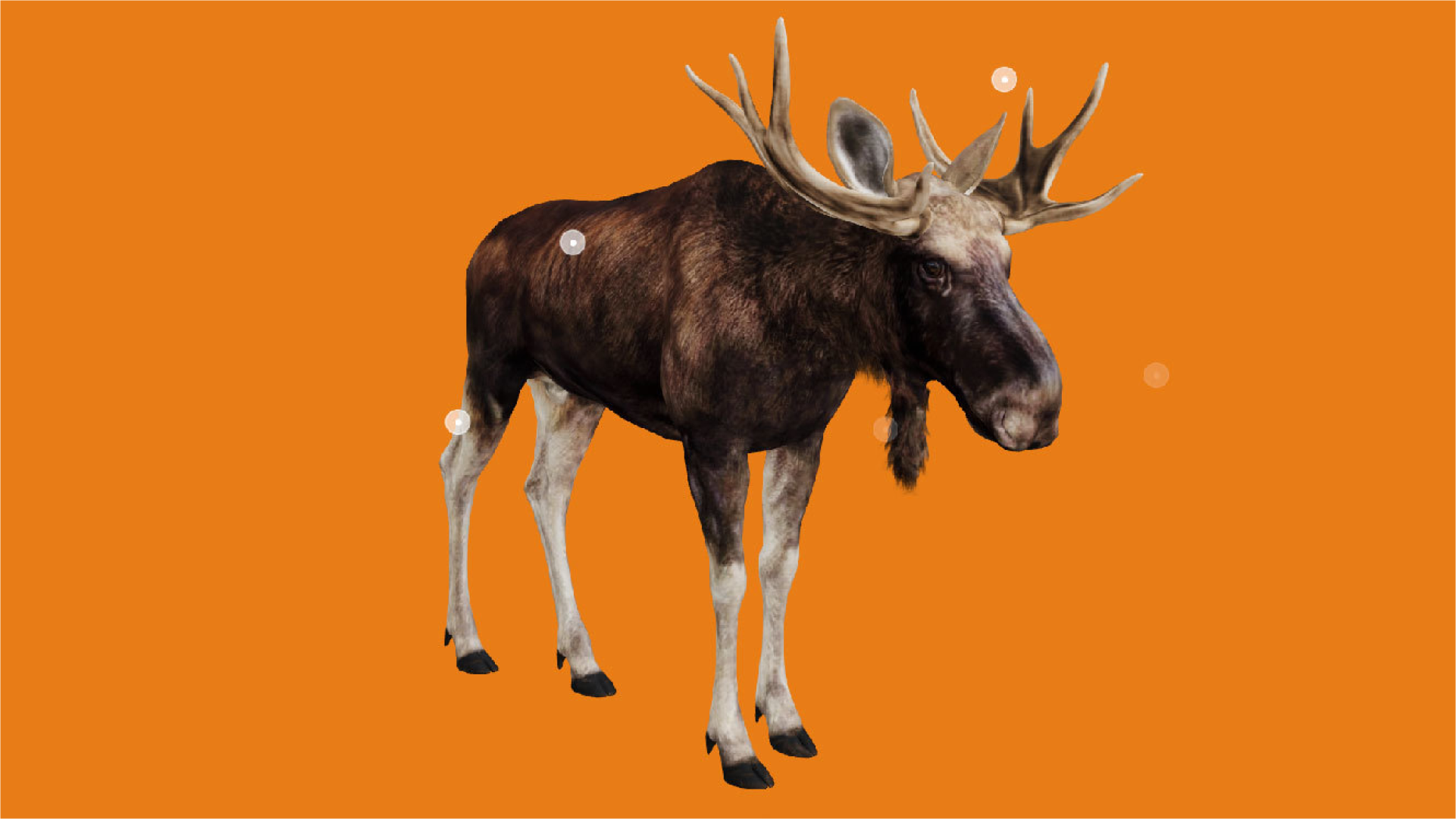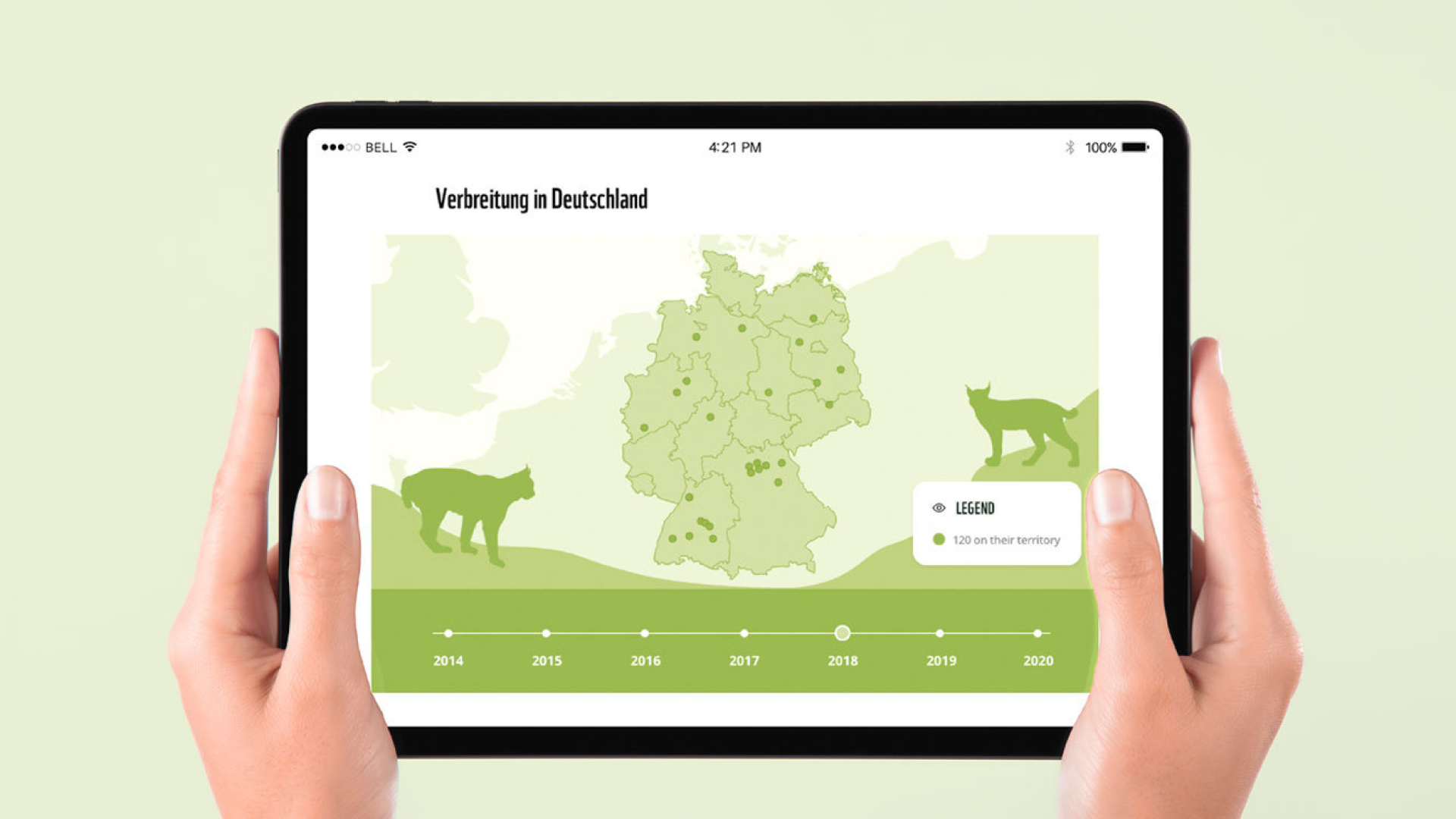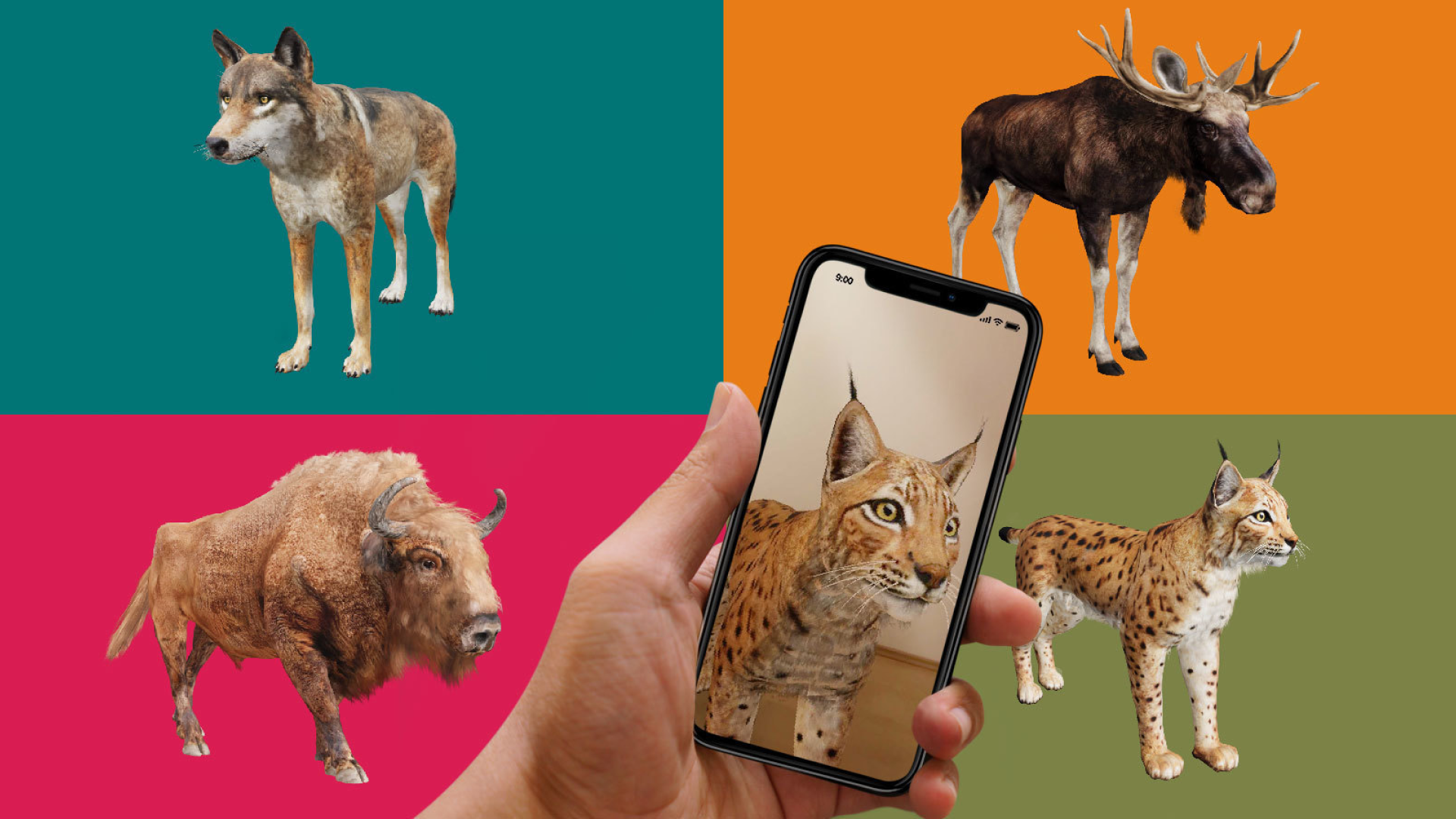Connecting with nature and all its fauna is a crucial step in the larger fight for habitat conservation. Demodern worked with World Wildlife Fund (WWF) to further that connection by creating an immersive AR experience where users can visualise endangered animals in their physical space. The experience gives a close look and study at wild animals native to Germany, complete with an exhaustive guide featuring details and interesting facts.
The informative project was honoured with Bronze for Best Use of Augmented Reality for its exemplary use of AR to dispel fears and misconceptions surrounding wild animals. We spoke with Demodern to get a behind-the-scenes peek into the creative process and what it takes to gain Lovie recognition.
To start, please tell us a little about the project and the inspiration behind it.
The Native Wildlife AR project is a collaborative effort between us and the World Wildlife Fund (WWF) that utilises the power of Augmented Reality to create an immersive and educational experience that brings users closer to endangered species. With an aim to support the WWF’s mission of reintroducing once-extinct animals back into Germany’s wilderness, the project employs a web-based AR application to engage users in a fun, interactive way, allowing them to interact with virtual wildlife at any time and in any kind of habitat.
What did the process of creating and developing Native Wildlife AR look like?
We worked hard to create accurate 3D models of the animals to create the most realistic and immersive experience possible. Aspects such as the integration of sound and the size of the 3D models also played an important role in making the application accessible to users of all ages and connection speeds—because the experience is intended to be used in schools and on wildlife tours. In addition, we developed an interactive map of Germany where users can see the current status of animals in Germany to make WWF’s already-achieved successes more tangible. The entire development process also included coding and testing the AR functionality, as well as designing the user interface and the overall experience.

What themes or schools of thought influenced the direction of your project?
The direction of the Native Wildlife AR project was strongly influenced by the themes of conservation and education. The project aimed to inspire users to take action to protect endangered species and their habitats, and to support the efforts of organisations like the WWF in their conservation work. As part of this effort, the AR experience aimed to dispel common misconceptions about the animals and their behaviour. By providing users with accurate 3D models of the animals, the experience could showcase their true size and nature. In addition, by providing information about their habitat and behaviour, users were able to learn more about the importance of protecting these animals and their natural environments.
What main features of the web AR experience resonated so much with your audience? What went into developing these features?
In particular, the ability to interact with virtual wildlife in real-world environments and the educational content of the AR experience resonated with our audience. Children in particular love taking photos of themselves and the AR animals – as they are unlikely to ever meet these very shy creatures in the wild. The features of the experience were realised with the free open source AR framework model-viewer, enabling a seamless and barrier-free experience for the user.
Did you run into any issues or troubles while developing Native Wildlife AR? What steps did you take to overcome them?
Despite the plethora of creative ideas we had in mind, we were unfortunately constrained by the limitations imposed by the model viewer in terms of interaction possibilities. Nonetheless, we remained steadfast in our efforts to extract maximum potential from the available resources, even if it meant relinquishing certain features that are only accessible with paid libraries.

Why did you choose AR as the medium for the project instead of others? How did this medium fit your narrative and goal for the project?
AR is particularly suitable for a project on endangered species, as it allows users to experience these animals in their natural environment without actually disturbing or endangering them. The use of AR technology allows users to view animals that are not easily seen from different perspectives and interact with them to develop a better understanding of their characteristics, behaviour and habitat.
What went into developing the design and layout of the experience? What impact did the final design choice have on the project as a whole?
We spent countless hours crafting and refining every detail of the animals’ appearance, from the texture of their fur to the subtle movements of their limbs. All these details had a profound impact on the project as a whole. The level of realism and attention to detail in the animals’ design helped to immerse users in the experience and make it feel as though they were interacting with real, living creatures.
What digital tools were instrumental in bringing the project together?
Due to the fact that developing a separate AR app would have involved too many barriers in terms of accessibility, we decided to use WebAR technology. The model-viewer is characterised by its easy implementation as well as the intuitive user experience. Using the model-viewer web component helped us to make 3D animals also accessible on a desktop. The AR application was complemented by an intuitive user interface developed in React.
“Winning this award has been an affirmation of our belief that we can use the power of technology to create a better world for all.”
How has your Lovie-winning project impacted your work in this field?
Our project has proven that by creating engaging and educational experiences, we can motivate people to become active participants in conservation efforts. Winning this award has been a validation of our approach and has given us renewed energy to continue our work towards creating a more sustainable and equitable world.
What does winning a Lovie Award mean to you?
Winning this Lovie Award is a testament to the power of Augmented Reality in creating meaningful and impactful experiences. It is a recognition of the importance of using innovation to spread awareness and inspire action on critical issues such as wildlife conservation. The reach of the internet and the accessibility of technology means that we have the ability to create real change, even from the comfort of our own homes. Winning this award has been an affirmation of our belief that we can use the power of technology to create a better world for all. It is a call to action for us to continue to push the boundaries of what is possible and to use our skills and expertise to make a positive impact.



